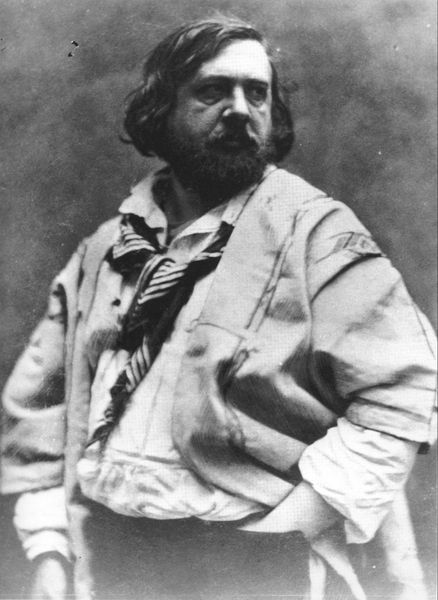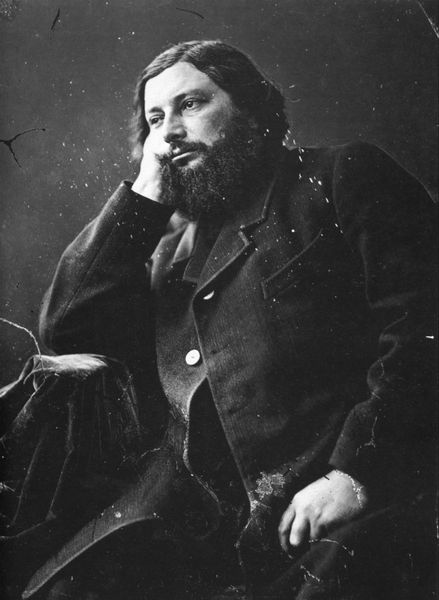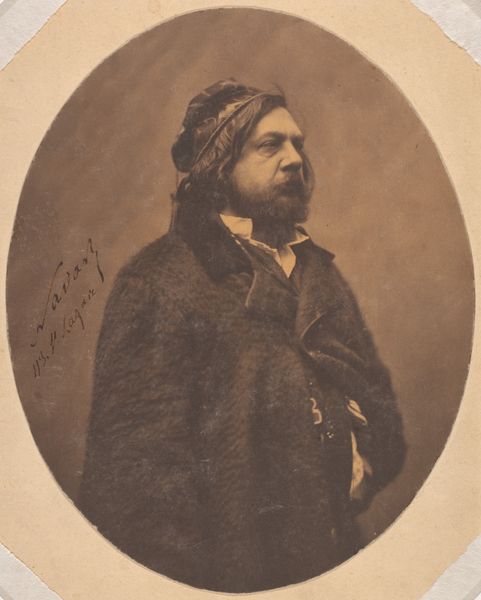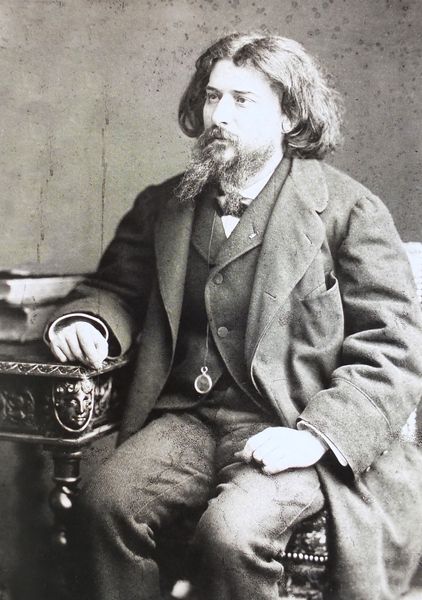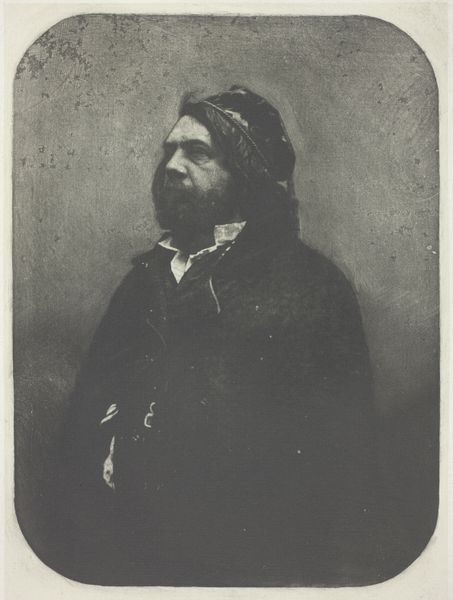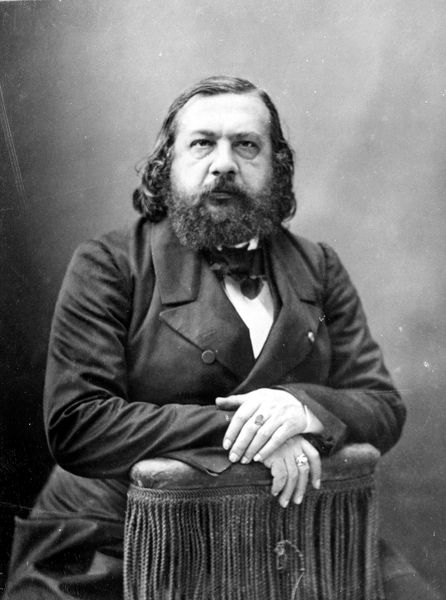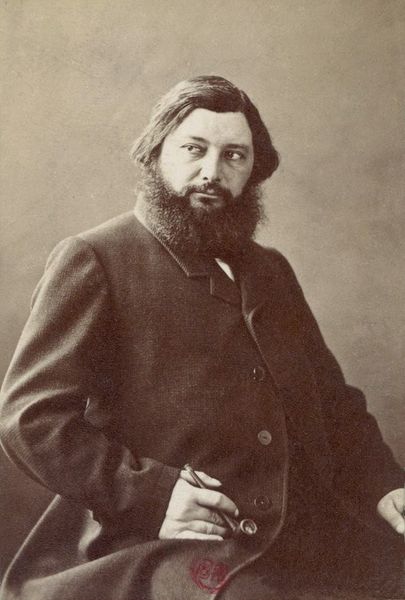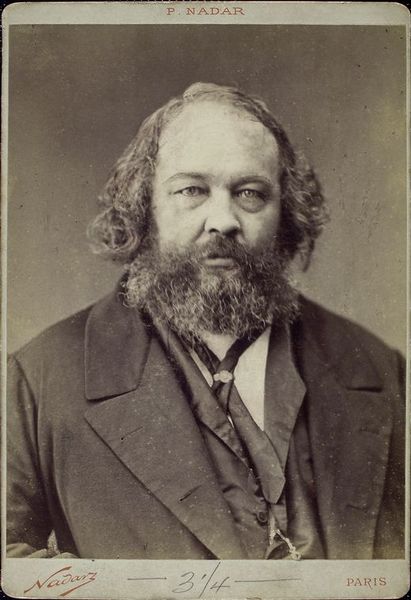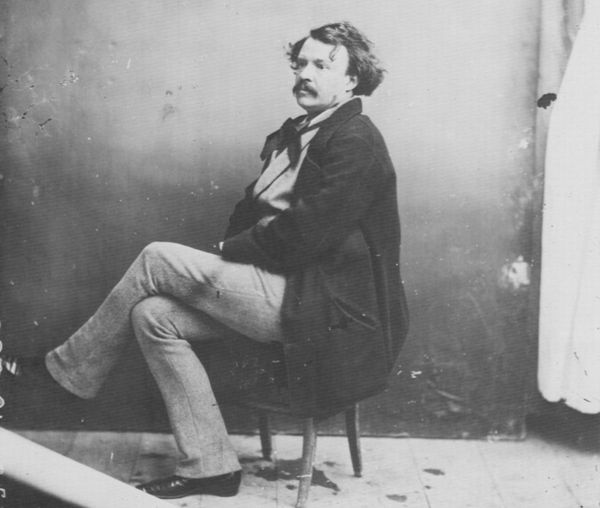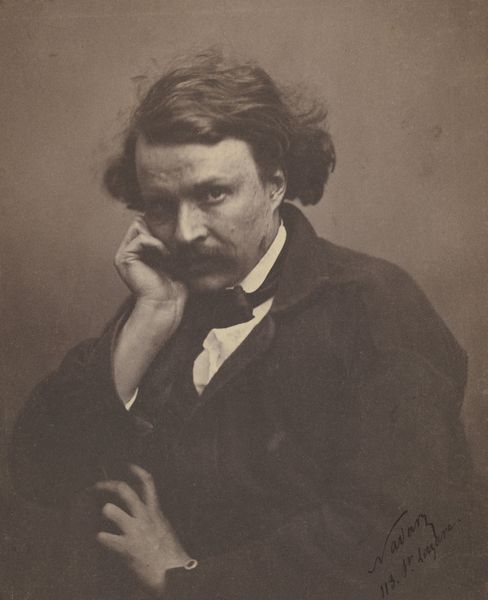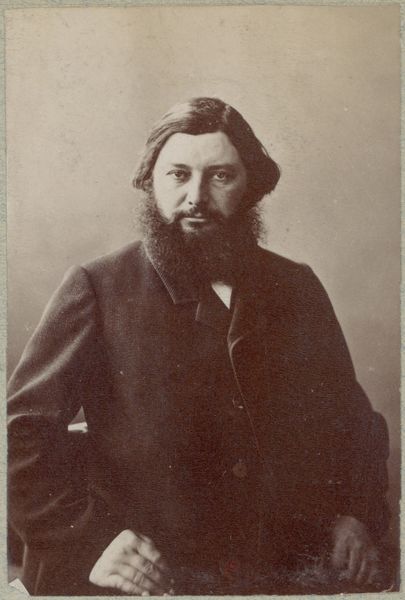
Copyright: Public domain
Curator: Standing before us is Félix Nadar's photograph, "Théophile Gautier," created in 1857. The image is a gelatin silver print. What are your initial thoughts? Editor: He appears to be bundled against the cold—there's something quite melancholy about this portrait. Perhaps a little romantic, in a brooding kind of way. Curator: Indeed. Nadar was a master of capturing personality, wasn't he? Gautier was, of course, a celebrated writer and critic. And the story of Nadar pioneering the commercial photography is fascinating as well, in connection with figures in his social network like Gautier, the production context reveals many interesting factors. Editor: It’s also intriguing to consider the social and cultural status photography was gaining in the mid-19th century. Here was this 'new' medium being used to capture the likeness of a prominent figure like Gautier. It spoke volumes about its legitimization and cultural value. Curator: And consider the materiality itself. Gelatin silver prints offer such incredible tonal range. That contributes to the somewhat dreamy, almost theatrical quality. Note how the deep shadows highlight his face, particularly his eyes. Nadar was intentionally deploying materials available to convey some visual meaning. Editor: You're right. It's this interplay between the individual portrayed and the socio-political moment, with this emergent medium, that I find the most captivating. How aware was Gautier of his own role as a symbol, a subject in the progression of imaging culture? And Nadar – was he purposefully participating in this symbolic action? Curator: I think so. Nadar opened his atelier to artists like Gautier, allowing and creating for collaborative exchanges. Photography and the act of portraiture were rapidly gaining commercial power and it must be understood how its economy and politics are constructed from production processes, labor division, and consumption demands. Editor: And for the viewer today, separated by time and technology, we're offered a small window into the complexities of celebrity and cultural representation in an entirely different era. The black and white photography itself helps create an interesting tension between now and then. Curator: A truly unique convergence, the making of that era and this photograph. Editor: Agreed. A fascinating intersection of person, place and materials, reflecting larger patterns in the culture industry and human desire.
Comments
No comments
Be the first to comment and join the conversation on the ultimate creative platform.
